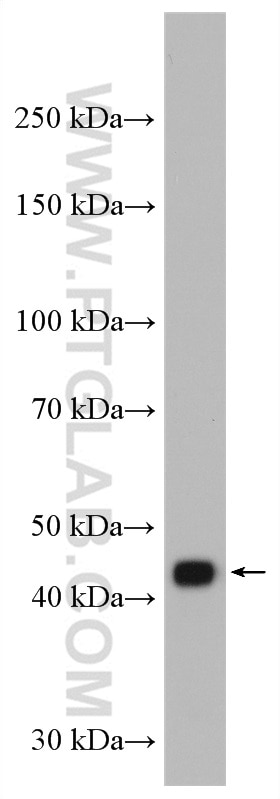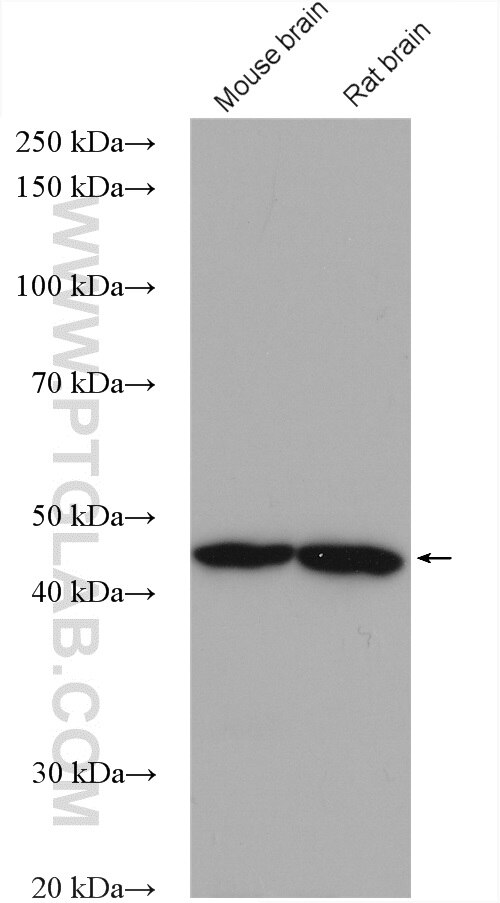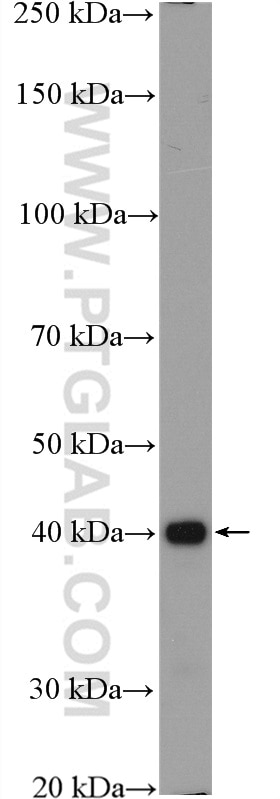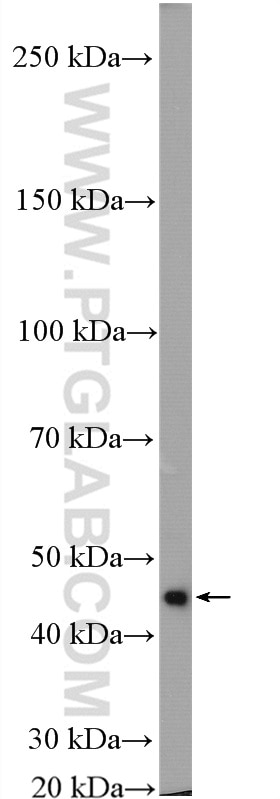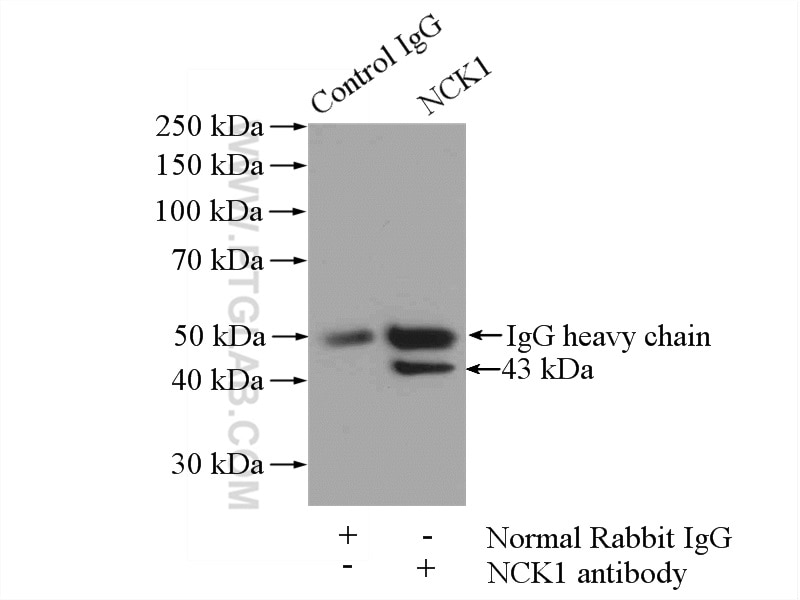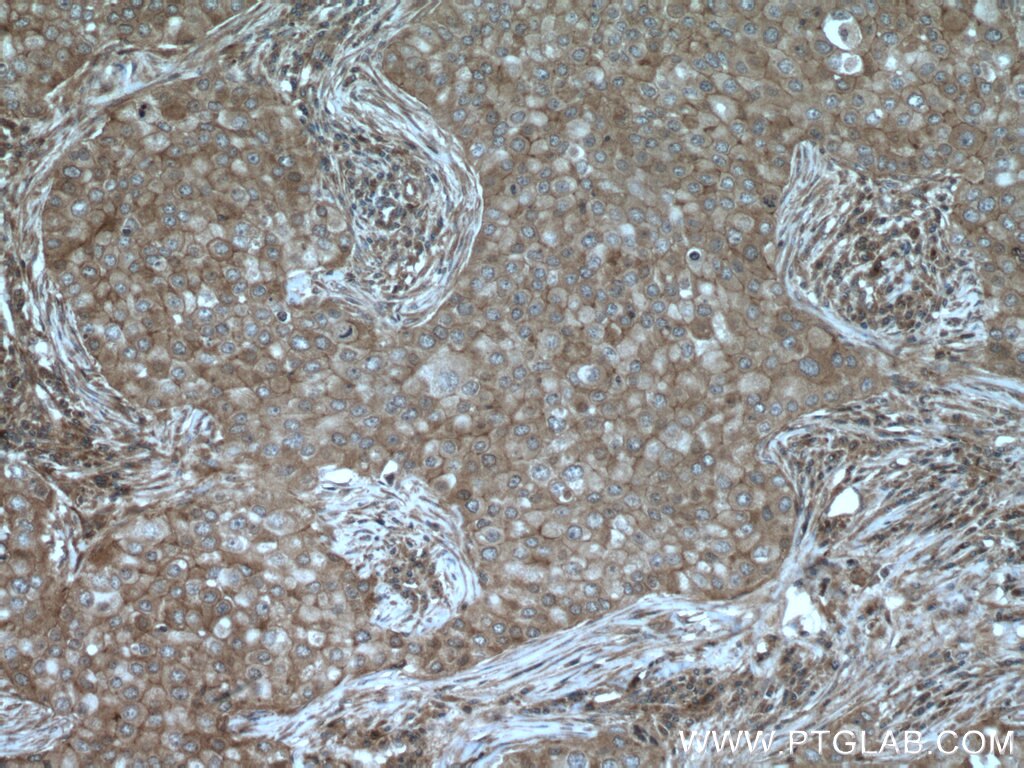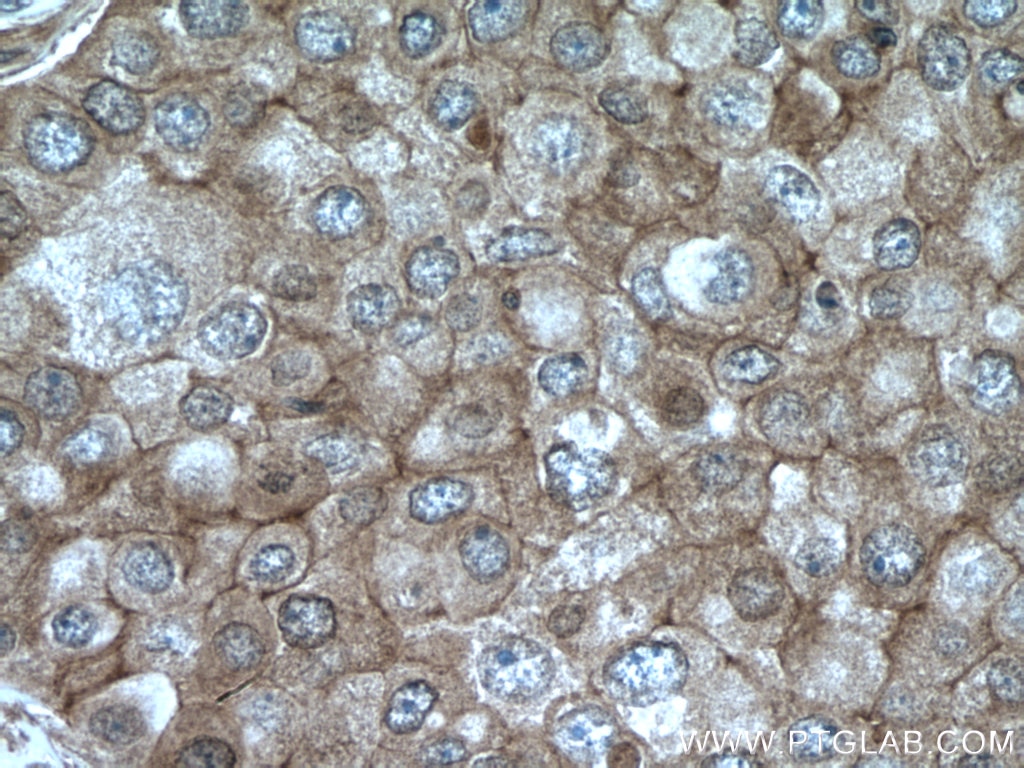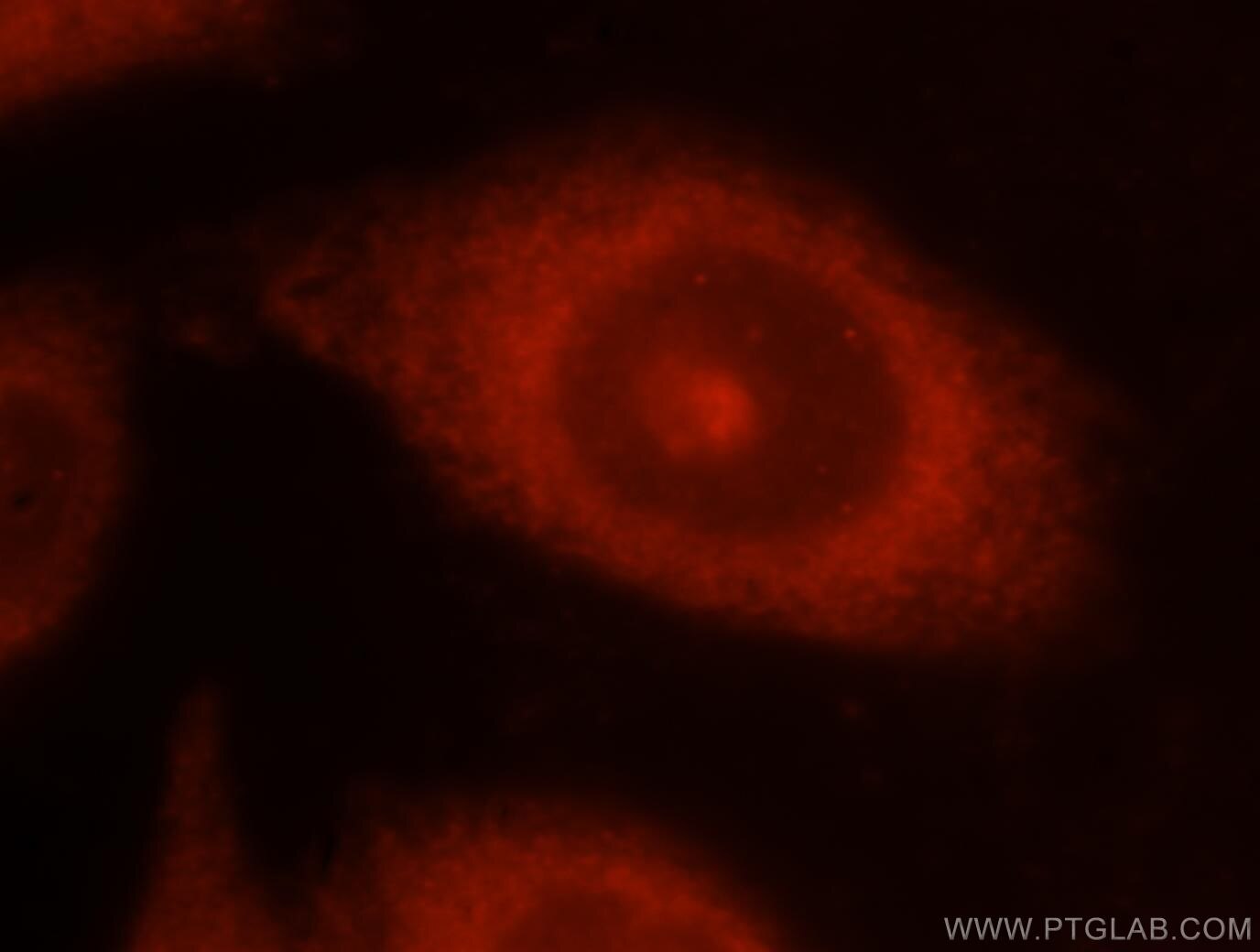- Phare
- Validé par KD/KO
Anticorps Polyclonal de lapin anti-NCK1
NCK1 Polyclonal Antibody for WB, IP, IF, IHC, ELISA
Hôte / Isotype
Lapin / IgG
Réactivité testée
Humain, rat, souris
Applications
WB, IHC, IF/ICC, IP, ELISA
Conjugaison
Non conjugué
N° de cat : 15247-1-AP
Synonymes
Galerie de données de validation
Applications testées
| Résultats positifs en WB | tissu cérébral de souris, tissu cérébral de rat, tissu hépatique de souris |
| Résultats positifs en IP | tissu cérébral de souris |
| Résultats positifs en IHC | tissu de cancer du sein humain, il est suggéré de démasquer l'antigène avec un tampon de TE buffer pH 9.0; (*) À défaut, 'le démasquage de l'antigène peut être 'effectué avec un tampon citrate pH 6,0. |
| Résultats positifs en IF/ICC | cellules HeLa |
Dilution recommandée
| Application | Dilution |
|---|---|
| Western Blot (WB) | WB : 1:500-1:2000 |
| Immunoprécipitation (IP) | IP : 0.5-4.0 ug for 1.0-3.0 mg of total protein lysate |
| Immunohistochimie (IHC) | IHC : 1:50-1:500 |
| Immunofluorescence (IF)/ICC | IF/ICC : 1:10-1:100 |
| It is recommended that this reagent should be titrated in each testing system to obtain optimal results. | |
| Sample-dependent, check data in validation data gallery | |
Applications publiées
| KD/KO | See 3 publications below |
| WB | See 5 publications below |
| IHC | See 1 publications below |
| IP | See 1 publications below |
Informations sur le produit
15247-1-AP cible NCK1 dans les applications de WB, IHC, IF/ICC, IP, ELISA et montre une réactivité avec des échantillons Humain, rat, souris
| Réactivité | Humain, rat, souris |
| Réactivité citée | Humain |
| Hôte / Isotype | Lapin / IgG |
| Clonalité | Polyclonal |
| Type | Anticorps |
| Immunogène | NCK1 Protéine recombinante Ag0979 |
| Nom complet | NCK adaptor protein 1 |
| Masse moléculaire calculée | 43 kDa |
| Poids moléculaire observé | 43 kDa |
| Numéro d’acquisition GenBank | BC006403 |
| Symbole du gène | NCK1 |
| Identification du gène (NCBI) | 4690 |
| Conjugaison | Non conjugué |
| Forme | Liquide |
| Méthode de purification | Purification par affinité contre l'antigène |
| Tampon de stockage | PBS avec azoture de sodium à 0,02 % et glycérol à 50 % pH 7,3 |
| Conditions de stockage | Stocker à -20°C. Stable pendant un an après l'expédition. L'aliquotage n'est pas nécessaire pour le stockage à -20oC Les 20ul contiennent 0,1% de BSA. |
Informations générales
NCK family adaptor proteins function to couple tyrosine phosphorylation signals to regulate actin cytoskeletal reorganization that leads to cell motility. Cytoplasmic protein NCK1 (or NCK alpha) is an adapter protein which associates with tyrosine-phosphorylated growth factor receptors, such as KDR and PDGFRB, or their cellular substrates. NCK1 binds a number of intracellular proteins and influences various signaling pathways including GTPase-activating protein of Ras (RasGAP), which is responsible for the down-regulation of Ras. NCK1 is recently reported to regulate the UPR, which secondary to obesity impairs glucose homeostasis and INS actions.
Protocole
| Product Specific Protocols | |
|---|---|
| WB protocol for NCK1 antibody 15247-1-AP | Download protocol |
| IHC protocol for NCK1 antibody 15247-1-AP | Download protocol |
| IF protocol for NCK1 antibody 15247-1-AP | Download protocol |
| IP protocol for NCK1 antibody 15247-1-AP | Download protocol |
| Standard Protocols | |
|---|---|
| Click here to view our Standard Protocols |
Publications
| Species | Application | Title |
|---|---|---|
Cell Signal Identification of NCK1 as a novel downstream effector of STAT3 in colorectal cancer metastasis and angiogenesis.
| ||
Mol Biol Rep STAT3-induced NCK1 elevation promotes migration of triple-negative breast cancer cells via regulating ERK1/2 signaling
| ||
Cancer Biomark Long noncoding RNA LINC00885 upregulates NCK1 to promote cell viability and migration of triple-negative breast cancer cells through sponging miR-654-3p | ||
Cell Microbiol The Legionella pneumophila effector WipA disrupts host F-actin polymerisation by hijacking phosphotyrosine signalling. |
